Chennai: A Journey Through Time
Embark on a captivating journey through Chennai's rich heritage and vibrant culture on this free walking tour. Explore iconic landmarks and hidden gems!
Time
3 Hours
Stops
8 Places
Distance
7.2 km
Kapaleeshwarar Temple
Start your tour at the Kapaleeshwarar Temple, a stunning example of Dravidian architecture and an important spiritual center in Chennai.
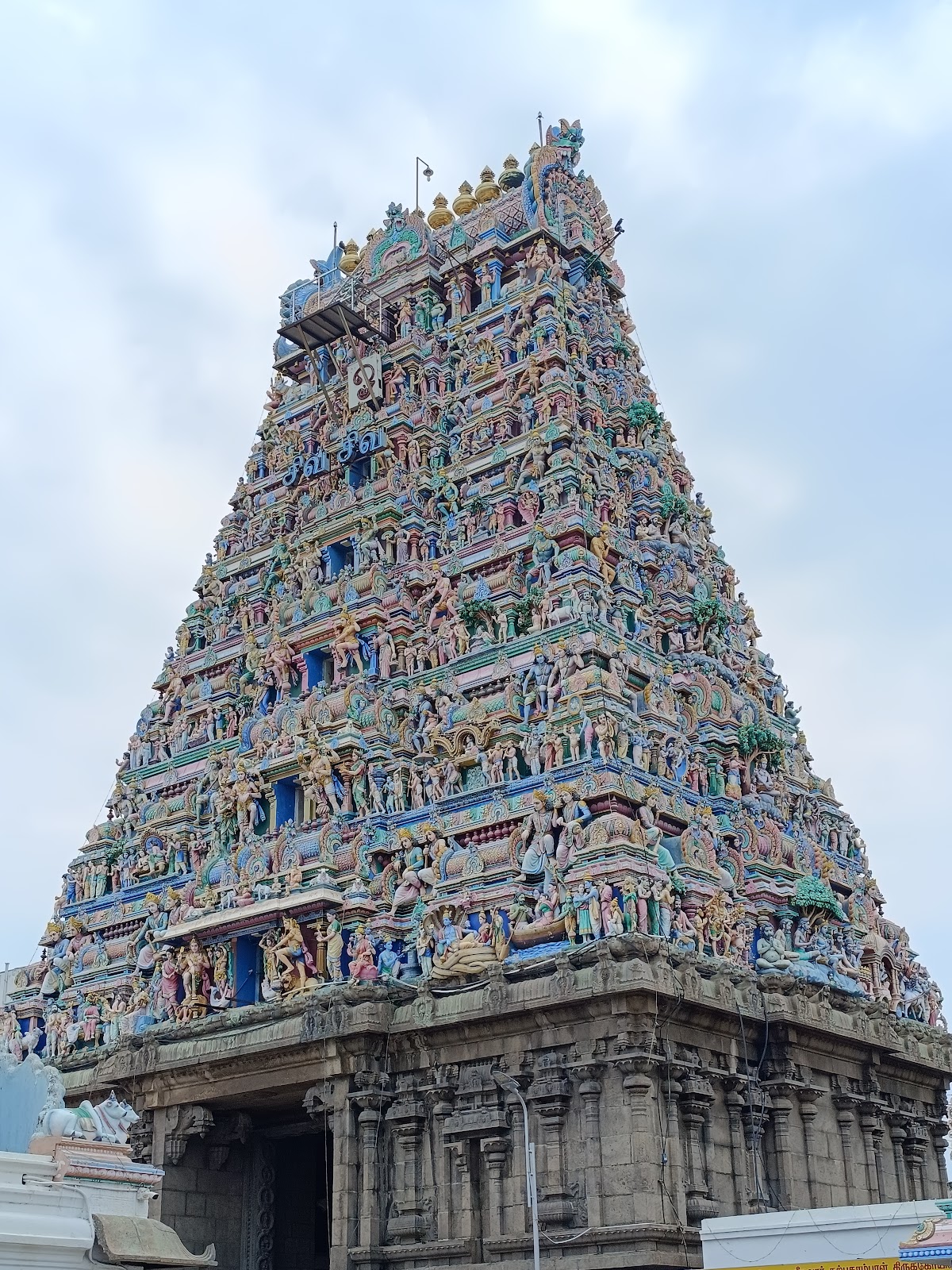
Kapaleeshwarar Temple (Source: Google Maps)
Kapaleeshwarar Temple is a magnificent example of Dravidian architecture, dedicated to Lord Shiva. Its origins date back to the 7th century, showcasing intricate carvings and vibrant sculptures that depict various deities and mythological stories. The temple's towering gopuram (gateway) is adorned with colorful figures, making it a focal point in the Mylapore area. Devotees flock to this spiritual center for its annual festivals, particularly the Arupathu Moovar Festival, which celebrates the 63 Nayanmars (saints) dedicated to Shiva. The temple not only serves as a place of worship but also as a cultural hub, reflecting the rich traditions and rituals of Tamil Nadu.
Santhome Cathedral Basilica
A short walk from the temple, this Roman Catholic basilica is built over the tomb of Saint Thomas, one of the twelve apostles of Jesus.
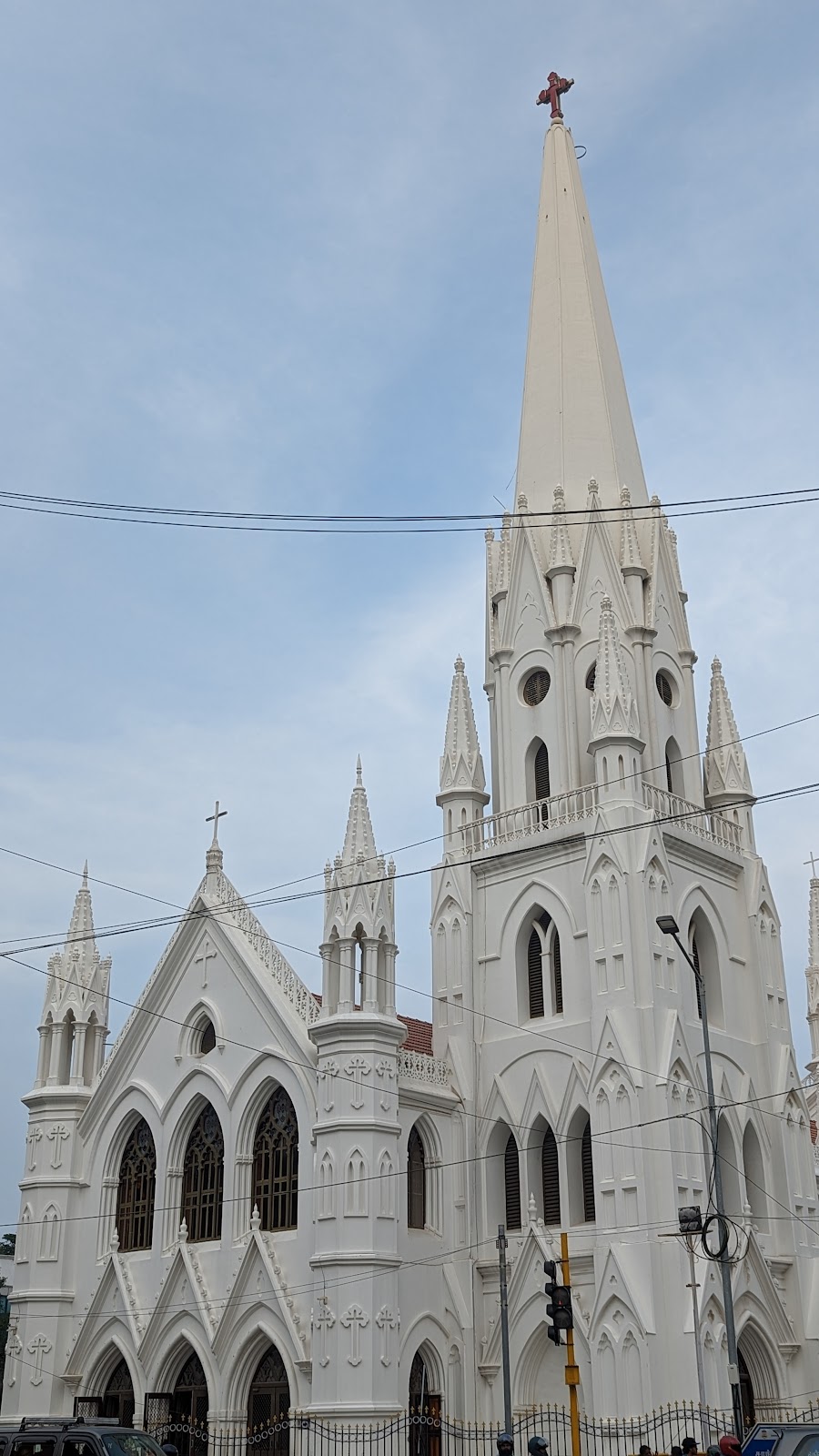
Santhome Cathedral Basilica (Source: Google Maps)
Santhome Cathedral Basilica is a prominent Roman Catholic church built over the tomb of Saint Thomas, one of Jesus' apostles. This neo-Gothic structure was completed in 1896 and stands as a testament to the Christian heritage in India. The basilica features stunning stained glass windows that depict scenes from the life of Christ and Saint Thomas. It is an important pilgrimage site, attracting visitors from around the world who come to pay their respects. The cathedral's serene ambiance and beautiful architecture make it a peaceful retreat amidst the bustling city, symbolizing the coexistence of different faiths in Chennai.
Light House
Visit the iconic Chennai Light House, offering panoramic views of the city and the coastline from its observation deck.
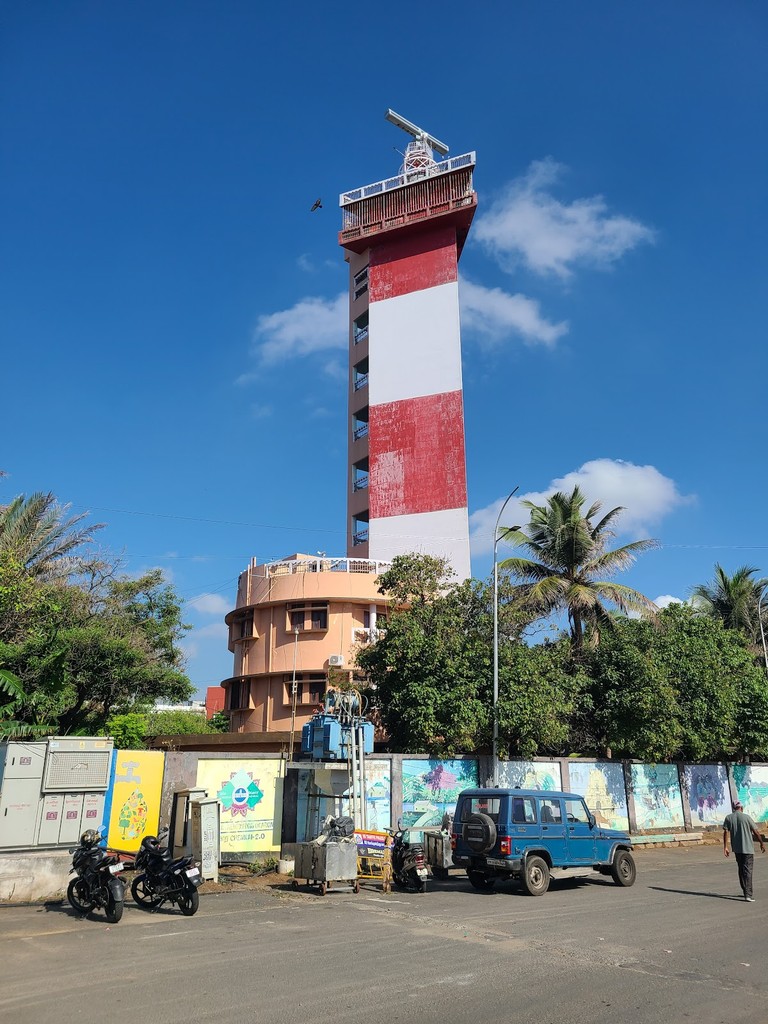
Light House (Source: Google Maps)
The Chennai Light House, an iconic structure, stands tall at 50 meters and has been guiding ships since 1905. This lighthouse features a unique octagonal shape and is painted in bold stripes, making it a striking landmark along the coastline. Visitors can climb the 142 steps to the observation deck, where they are rewarded with breathtaking panoramic views of the city and the Bay of Bengal. The light house is not just a navigational beacon; it also has historical significance, having witnessed the evolution of maritime activities in Chennai. Its location near the beach adds to its charm, making it a popular spot for both tourists and locals.
Marina Beach
Enjoy a leisurely stroll along Marina Beach, the longest natural urban beach in India, offering a picturesque view of the Bay of Bengal.

Marina Beach (Source: Google Maps)
Marina Beach is the longest natural urban beach in India, stretching over 13 kilometers along the Bay of Bengal. This vibrant beach is a hub of activity, attracting families, joggers, and vendors selling local snacks. The beach is famous for its golden sands and lively atmosphere, where visitors can enjoy leisurely strolls, horse rides, and stunning sunrises. It is also home to several memorials and statues, including the iconic M.G. Ramachandran Memorial. Marina Beach plays a vital role in Chennai's culture, often serving as a venue for events and celebrations, reflecting the city's coastal lifestyle and its connection to the sea.
Vivekananda House
Explore the historical Vivekananda House, where Swami Vivekananda stayed in 1897, now a museum dedicated to his life and teachings.
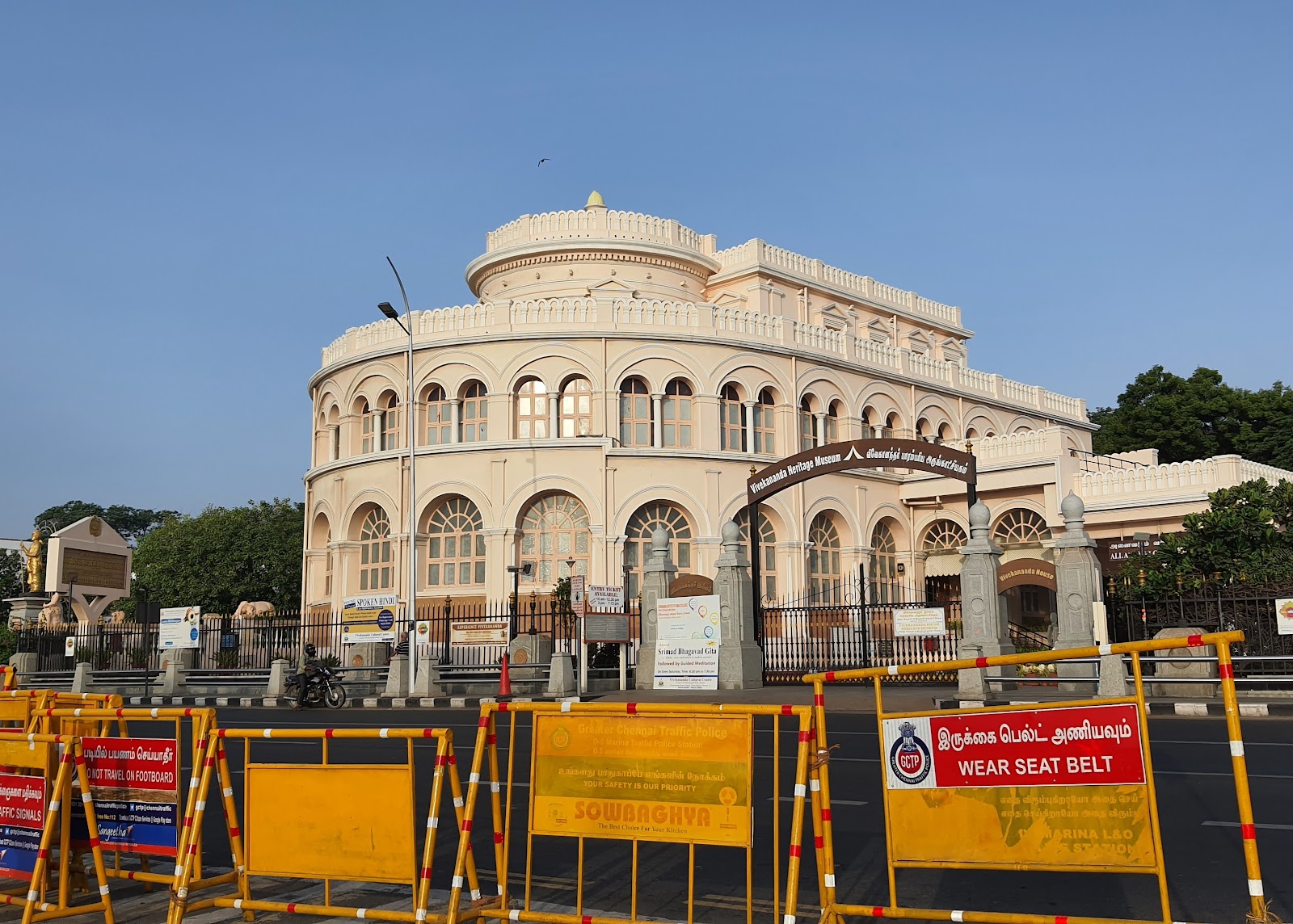
Vivekananda House (Source: Google Maps)
Vivekananda House is a historic building that served as the residence of Swami Vivekananda during his visit to Chennai in 1897. Now a museum, it showcases artifacts related to Vivekananda's life and teachings, including his letters, photographs, and personal belongings. The house is a vital part of India's spiritual heritage, symbolizing the revival of Hindu philosophy and the promotion of social reform. The architecture blends Indo-Saracenic styles, enhancing its historical significance. Visitors can explore the various exhibits that highlight Vivekananda's impact on Indian society and his role in introducing Vedanta to the Western world, making it a must-visit for those interested in spirituality and history.
Napier Bridge
Walk across the scenic Napier Bridge, an architectural marvel that connects Marina Beach with Fort St. George.
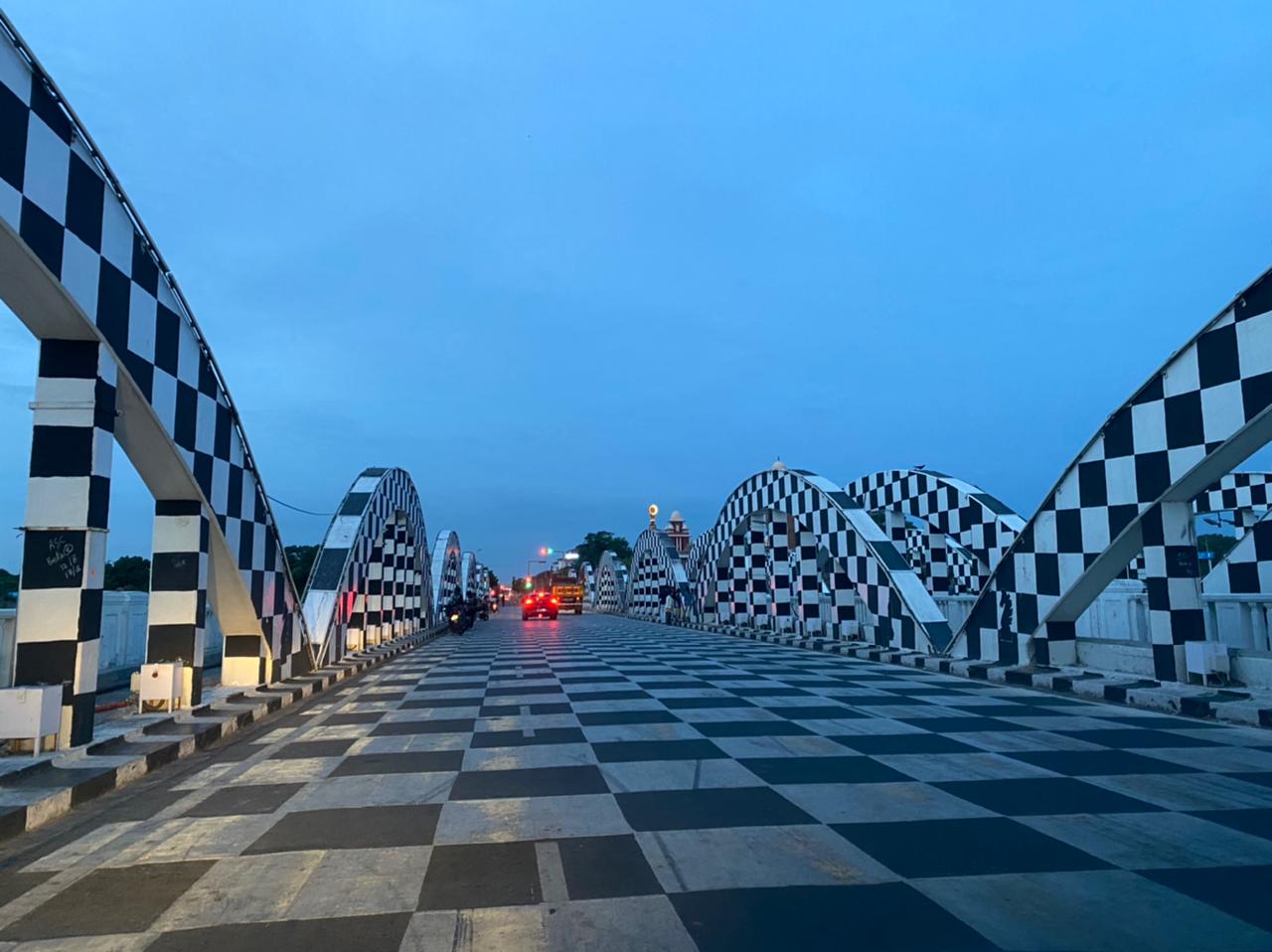
Napier Bridge (Source: Google Maps)
Napier Bridge is an architectural marvel that connects Marina Beach with Fort St. George. Built in 1900, this bridge is named after Lord Napier, the then Governor of Madras. The bridge is designed in a unique Gothic style and features two striking lion statues at either end, symbolizing strength and resilience. It serves not only as a functional structure but also as a popular gathering spot, offering picturesque views of the surrounding area. The bridge holds historical significance as it has witnessed numerous events in Chennai's history, making it a popular subject for photographers and a favorite spot for locals and tourists alike.
Fort St. George
Delve into history at Fort St. George, the first English fortress in India, now housing a museum and the Tamil Nadu legislative assembly.
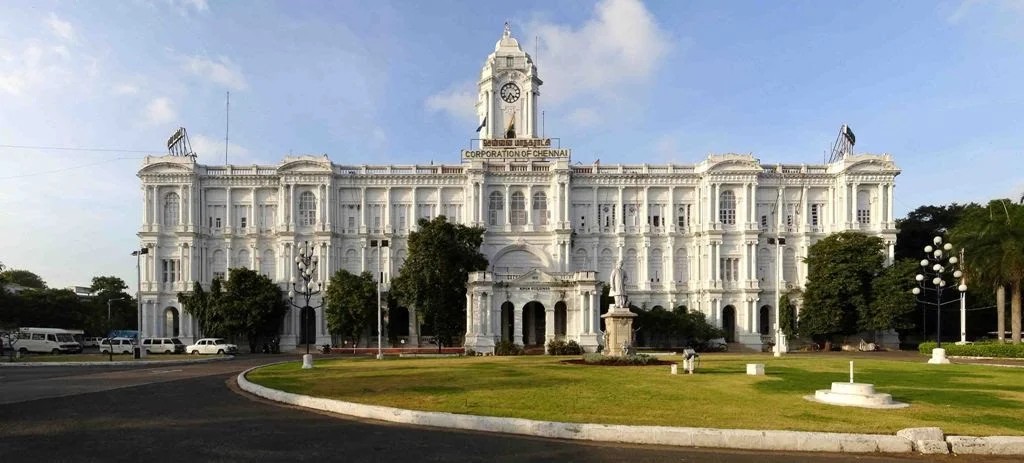
Fort St. George (Source: Google Maps)
Fort St. George, established in 1644, is the first English fortress in India and a significant historical site. It played a crucial role in the establishment of British power in the region and now houses a museum that showcases artifacts from the colonial era. The fort's architecture reflects the military style of the time, with sturdy walls and strategic positioning overlooking the sea. Visitors can explore the museum, which includes paintings, manuscripts, and weapons from the period, providing insight into the history of Chennai and the British Raj. Fort St. George remains a symbol of Chennai's colonial past and continues to be a site of historical interest.
St. Mary’s Church
Located within Fort St. George, St. Mary’s Church is the oldest Anglican church in India, showcasing colonial architecture and historical artifacts.
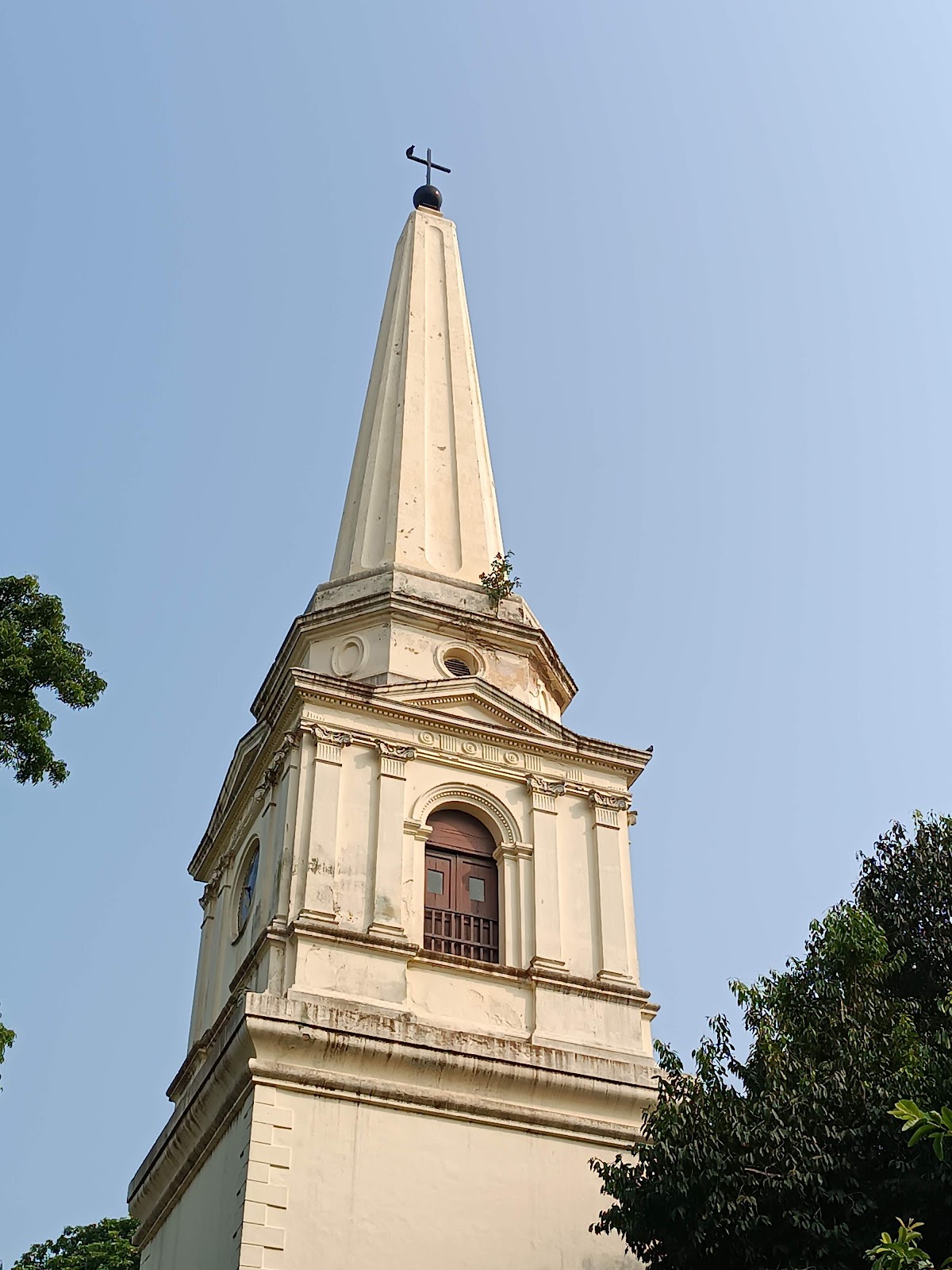
St. Mary’s Church (Source: Google Maps)
St. Mary’s Church, located within Fort St. George, is the oldest Anglican church in India, consecrated in 1680. This church is a stunning example of colonial architecture, featuring beautiful stained glass windows and intricate woodwork. It serves as the final resting place for several notable figures from the colonial period, including British officers and soldiers. The church's serene atmosphere and historical significance make it a popular destination for both worship and tourism. Visitors can admire the church's unique blend of British and Indian architectural styles, reflecting the cultural exchanges of the time. St. Mary’s Church stands as a testament to Chennai's rich religious heritage.

Your travels, your rules.
Create your own Free Walking Tours.
Set your preferences, distances and anything you want to do or see.
Completely free, no payment required.